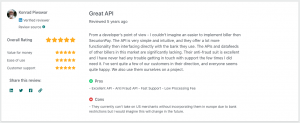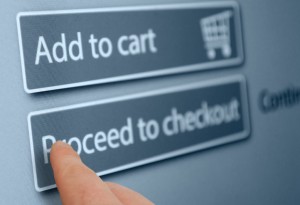Today’s customers are inundated with choices. Whether bottled water or mobile devices, there  are hundreds of brands to choose from. And sometimes competing brands offer products with similar features, benefits, and price. Because the marketplace is oversaturated with little differentiation, customers are changing how they make their final purchase decisions. No longer is it just about features, price points, and slick marketing. Customers are now placing their bets on brands that offer services that complement their desired lifestyle.
are hundreds of brands to choose from. And sometimes competing brands offer products with similar features, benefits, and price. Because the marketplace is oversaturated with little differentiation, customers are changing how they make their final purchase decisions. No longer is it just about features, price points, and slick marketing. Customers are now placing their bets on brands that offer services that complement their desired lifestyle.
In the Center for Business Insight inquiry “Your New Product Strategy: Services,” Soren Kaplan, innovation consultant and author of the best-selling book Leapfrogging, observes, “It’s much easier to copy great products and it’s increasingly difficult to differentiate yourself through products or technology anymore. If you have a service, you are immediately creating a relationship with your customer to reinforce your brand while opening up opportunities to deliver additional value.”
Think about your “go-to brands.” How do they add value to your life? Most likely it’s not just about the product – it’s the service that comes along with it.
A desire for a simpler life: A personal brand experience
Earlier this year, my husband came home with a new gadget in hand – Amazon’s Echo. At first, I was very skeptical of this purchase. Will it make lives our better? Or will this collect dust and go unused in six months? Sure, Amazon is my preferred e-tailer, but will it make our lives easier?
 Over the last few months, Echo has kept us up to date on the latest news, weather, traffic, and sports scores; filled our home with music from our favorite playlists and radio stations; and even answered a few homework questions. My husband and I even use it to update our grocery list. Although these features are fun and useful, we didn’t realize its true potential – until now.
Over the last few months, Echo has kept us up to date on the latest news, weather, traffic, and sports scores; filled our home with music from our favorite playlists and radio stations; and even answered a few homework questions. My husband and I even use it to update our grocery list. Although these features are fun and useful, we didn’t realize its true potential – until now.
Recently, Amazon announced that Echo will allow users to order products on Amazon.com by voice. Just imagine the possibilities! For my family of five, we always seem to run out of toilet paper. So when we’re on our last roll, all we have to do is ask Echo to order more. It searches my order history to locate brands I’ve bought earlier and ask me whether I want to finalize that purchase – immediately and with zero clicks. If Echo is unable to find what I’m looking for, it’ll offer an alternative with pricing information and finalize the order if I want it.
Talk about simplification of the customer experience!
4 ways you can deliver on the promise of customer simplicity with services
Services are growing from customer demand for simplicity. The more you can streamline your product and extend its value, the more enticing your brand will be. Here are four top service models that can deliver simplification to your customers.
- Bundled offerings. By incorporating a service into your product, you can bring more value to your customers. Kaeser Kompressoren, a leading compressed-air system supplier, embedded sensors in its systems to alert its tech team when a breakdown is looming and track the quantity of compressed air used by a customer. With this service, Kaeser Kompressoren’s customers are ensured that their investment is high-performing and consistently in working order.
- Data as a service. If your organization is using Web apps, cloud technology, and industrial-strength analytics, it’s most likely gathering data that is highly valuable to customers. For instance, Mint, an online personal finance service, analyzes collected data on its users’ personal buying habits. With a greater understanding of its users, Mint matches them with the right retail offers. And whenever a user accepts an offer, Mint makes money from that referral.
- Experience as a service. According to Joseph Pine, a Fortune 500 management consultant/advisor and co-author of The Experience Economy: Work Is Theatre and Every Business a Stage, customers will pay more for a memorable or pleasant experience. The Coca-Cola Freestyle soda blending machine is a great example of this trend. With this innovation and the ability to customize, Coke is changing how we consume soft drinks. But more important, the new business model is making the product more cost-effective for restauranteurs by applying monthly rental fees rather than the traditional per-unit pricing.
- Transformational services. In addition to moving products and supporting services, there is an opportunity to help customers become better businesses. By monetizing your competencies, you can empower customers to increase revenue and market share, improve customer satisfaction, and reduce costs. As a result, your company will be viewed as a business partner – not just another vendor.
(190)
Report Post







